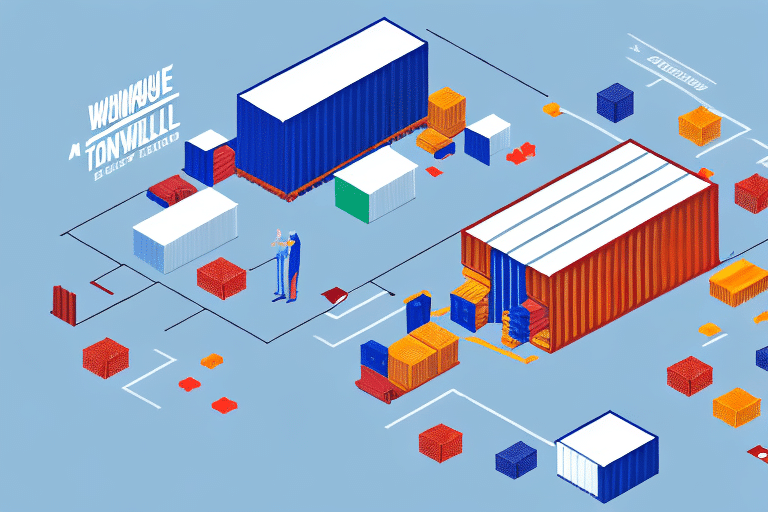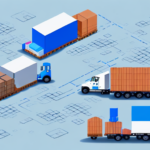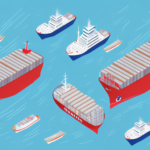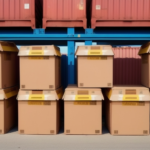Understanding Devanning in Logistics
As businesses continue to globalize, managing logistics efficiently becomes increasingly complex. A critical process within logistics that can significantly impact efficiency is devanning. Devanning refers to the unloading and unpacking of cargo from shipping containers or trailers, serving as a pivotal step in the supply chain. Although it can be time-consuming and labor-intensive, effective devanning can streamline operations, reduce costs, and enhance overall supply chain performance.
Benefits of Devanning for Your Business
Implementing a well-executed devanning process offers numerous advantages:
- Improved Efficiency: Reducing the time required to unload containers accelerates the supply chain, allowing products to reach the market faster.
- Enhanced Inventory Management: Proper unpacking and organization facilitate accurate inventory tracking, minimizing discrepancies and losses.
- Risk Mitigation: Early inspection of cargo helps identify any damages or missing items, reducing potential losses.
- Cost Savings: Outsourcing devanning can lower labor costs and minimize expenses related to cargo damage and theft.
- Workplace Safety: Professional handling reduces the risk of workplace injuries, ensuring a safer environment for employees.
According to a McKinsey report, efficient logistics operations can reduce supply chain costs by up to 20%, highlighting the significance of processes like devanning.
Devanning Process and Best Practices
Optimizing the devanning process involves several key steps:
- Unloading Cargo: Carefully remove goods from containers or trailers using appropriate equipment.
- Inspection and Verification: Assess the cargo for any damage or discrepancies against shipping documents.
- Sorting and Organizing: Categorize goods based on destination, type, or other relevant criteria to streamline further distribution.
- Packaging Disposal: Properly dispose of or recycle packaging materials to maintain environmental compliance and warehouse cleanliness.
Adhering to best practices, such as implementing standard operating procedures (SOPs) and utilizing technology for tracking, can significantly enhance the devanning process. For more detailed methods, the Supply Chain Brain provides comprehensive guidelines.
Utilizing Technology in Devanning
Incorporating technology, such as warehouse management systems (WMS) and automation tools, can improve accuracy and speed in devanning operations. For example, IBM's Supply Chain Management solutions offer advanced features for tracking and managing cargo.
Tools and Equipment Used in Devanning
Successful devanning relies on the use of appropriate tools and equipment:
- Forklifts: Essential for moving heavy pallets and containers safely.
- Pallet Jacks: Useful for transporting pallets over short distances within the warehouse.
- Conveyors: Facilitate the movement of goods, especially in high-volume operations.
- Sorting Tables: Provide organized spaces for categorizing and processing cargo.
For handling specialized cargo, such as fragile or hazardous materials, additional equipment like automated guided vehicles (AGVs) may be necessary. Ensuring operators are trained and certified, especially for machinery like forklifts, is crucial for maintaining safety and efficiency.
Investing in Specialized Equipment
Investing in specialized equipment tailored to your cargo type can prevent damage and optimize handling. According to OSHA, using the right equipment is vital for workplace safety and compliance.
Overcoming Challenges and Ensuring Safety
Devanning can pose several challenges, including:
- Delays and Bottlenecks: Insufficient preparation or poor coordination can slow down the process.
- Damage to Cargo: Improper handling may lead to product damage or loss.
- Misplacement of Goods: Poor labeling or organization can result in misplaced items.
To overcome these challenges:
- Enhanced Planning: Develop detailed plans and timelines to ensure smooth operations.
- Training: Regularly train staff on proper handling techniques and protocols.
- Use of Technology: Implement tracking systems to monitor cargo locations and status.
Additionally, prioritizing safety is crucial to protect workers and cargo:
- Personal Protective Equipment (PPE): Ensure all workers wear appropriate gear, such as gloves, helmets, and safety shoes.
- Clear Workspaces: Maintain clutter-free areas to prevent accidents.
- Equipment Maintenance: Regularly inspect and maintain tools and machinery to prevent malfunctions.
Adhering to safety guidelines not only safeguards employees but also enhances operational efficiency by reducing downtime caused by accidents. The OSHA Safety and Health Administration provides extensive resources on safe devanning practices.
Partner Selection and Cost Analysis
Choosing a reliable devanning partner can significantly impact your logistics efficiency. When evaluating potential partners, consider the following factors:
- Experience and Reputation: Look for providers with a proven track record and positive customer reviews.
- Range of Services: Ensure they offer comprehensive services that meet your specific needs.
- Technology Integration: Partners utilizing advanced technology can offer more efficient and transparent operations.
- Safety and Compliance: Verify that the provider adheres to all safety regulations and industry standards.
Working with a reputable devanning provider ensures that your cargo is handled efficiently and securely, enabling you to focus on other aspects of your business.
Cost Analysis: Evaluating Devanning as an Investment
While outsourcing devanning involves upfront costs, it can lead to long-term savings and operational benefits:
- Labor Cost Reduction: Outsourcing eliminates the need for in-house labor, reducing payroll expenses.
- Minimized Cargo Damage: Professional handling decreases the likelihood of damage, saving costs on replacements and repairs.
- Faster Turnaround Times: Improved efficiency accelerates the supply chain, boosting revenue.
A study by Statista indicates that businesses with optimized logistics processes can see up to a 30% increase in overall efficiency. Conducting a thorough cost-benefit analysis can help determine the return on investment (ROI) of devanning services for your business.
Case Studies and Future Trends
Case Studies: Successful Devanning Implementations
Real-world examples demonstrate the positive impact of efficient devanning:
Global Retailer Enhances Efficiency
A multinational retail company outsourced their devanning operations to a specialized provider, resulting in a 25% reduction in unloading times and a significant decrease in cargo damage rates. This allowed the company to improve inventory accuracy and boost customer satisfaction.
Food and Beverage Manufacturer Improves Distribution
A leading food and beverage manufacturer streamlined their devanning process by implementing advanced tracking systems. This led to a 20% faster turnaround time, enabling the company to get products to market quicker and enhance consumer feedback.
These case studies highlight the importance of adopting efficient devanning strategies to achieve operational excellence and competitive advantage.
Future Trends in Devanning and Their Impact on Logistics
The devanning process is evolving with technological advancements and industry innovations:
- Automation and Robotics: Increased use of automated systems and robots can further enhance efficiency and reduce labor costs.
- Internet of Things (IoT): IoT devices can provide real-time tracking and monitoring of cargo, improving visibility and management.
- Collaborative Supply Chains: Enhanced collaboration between logistics providers and shipping companies can optimize the entire supply chain.
- Sustainability: Focus on eco-friendly practices, such as recycling packaging materials and reducing carbon footprint.
Staying informed about these trends and integrating relevant technologies into your devanning process can help maintain competitiveness and drive continuous improvement. According to a McKinsey report, automation in warehouses can increase productivity by up to 25%, indicating significant potential benefits for devanning operations.
In conclusion, devanning is a crucial component of the logistics process that offers substantial benefits when executed effectively. By implementing best practices, utilizing appropriate tools, overcoming challenges, and partnering with reliable providers, businesses can optimize their logistics operations, reduce costs, and enhance overall supply chain performance. Embracing future trends and technological innovations will further ensure sustained success and competitive advantage in the ever-evolving global market.




















